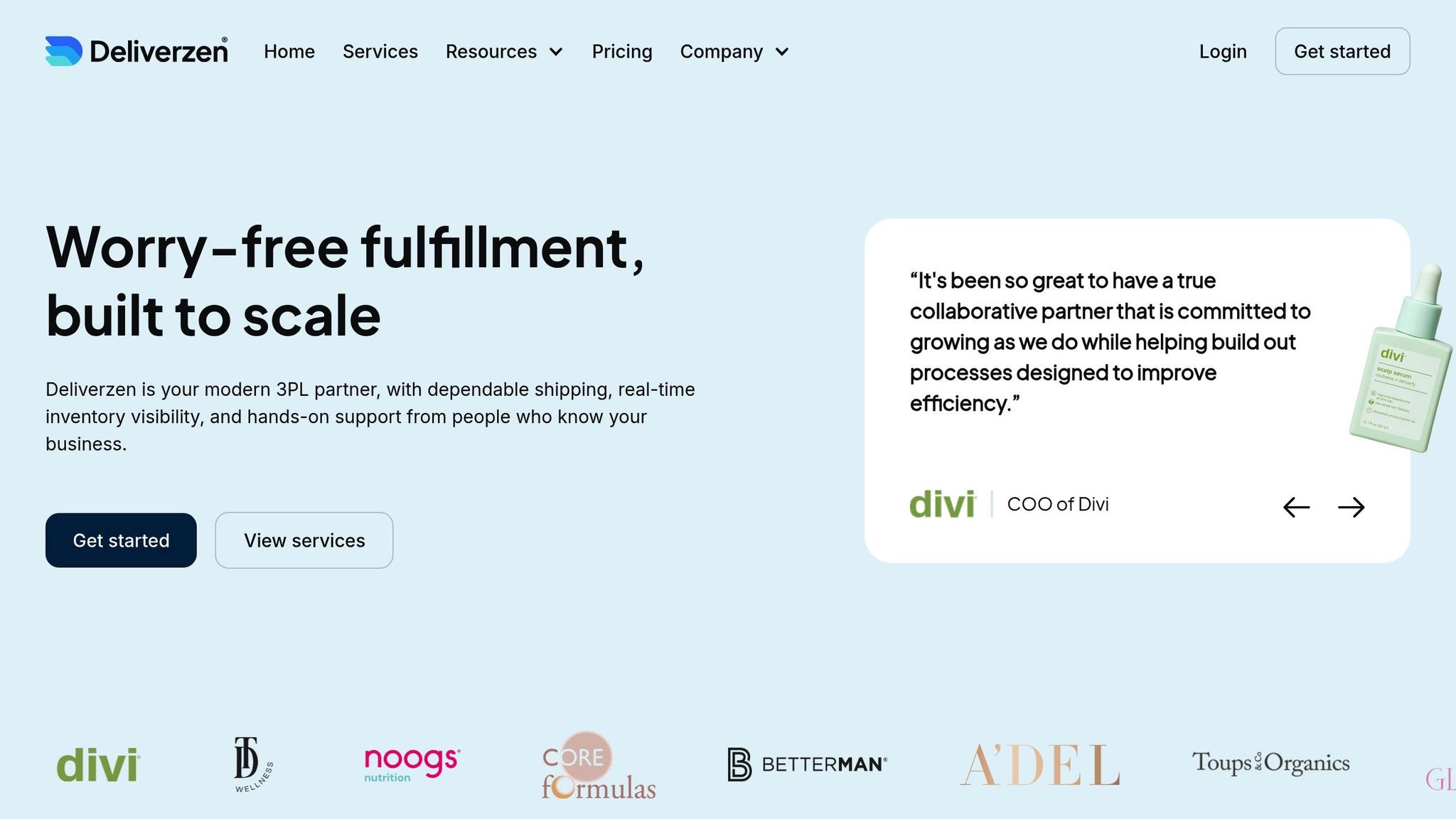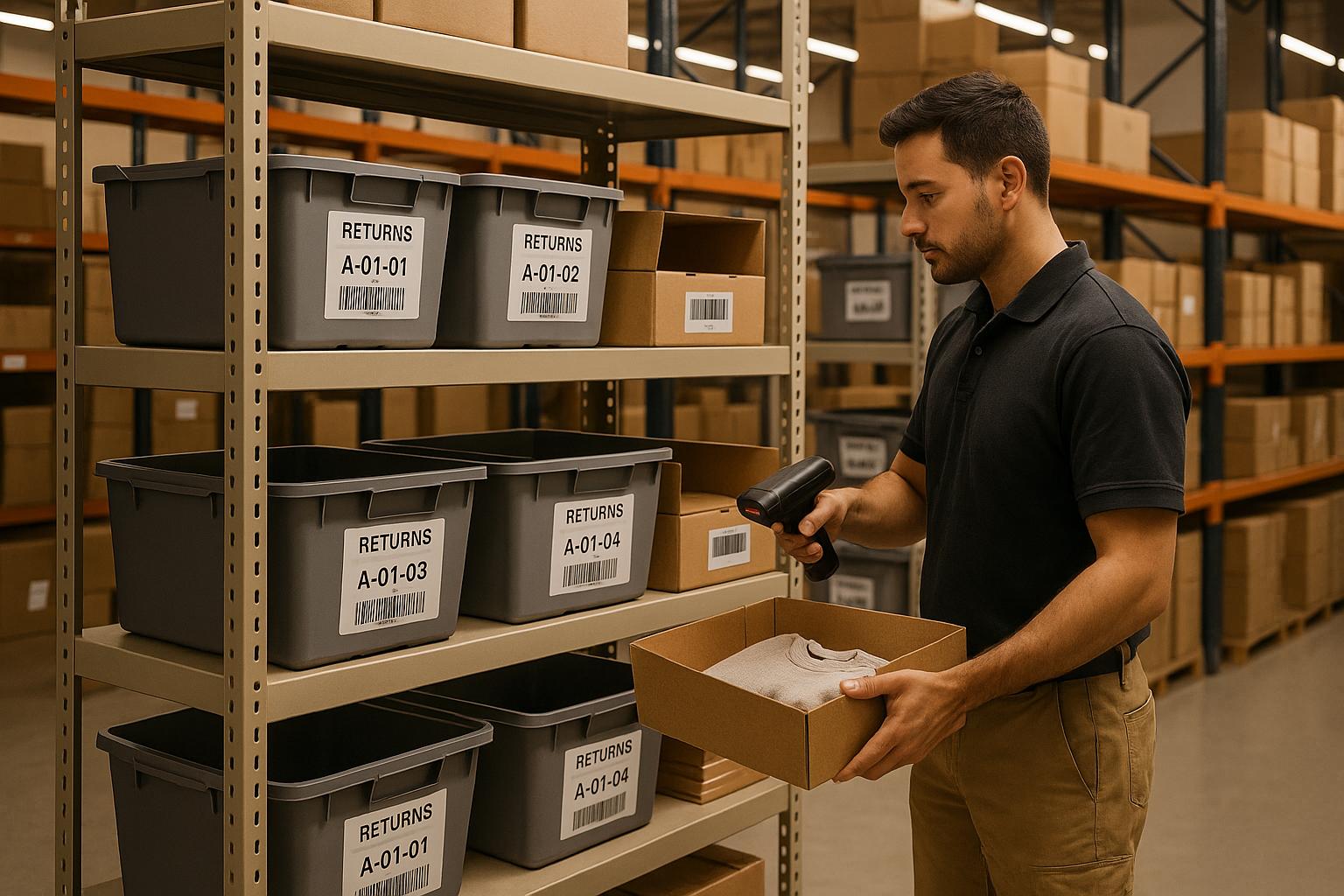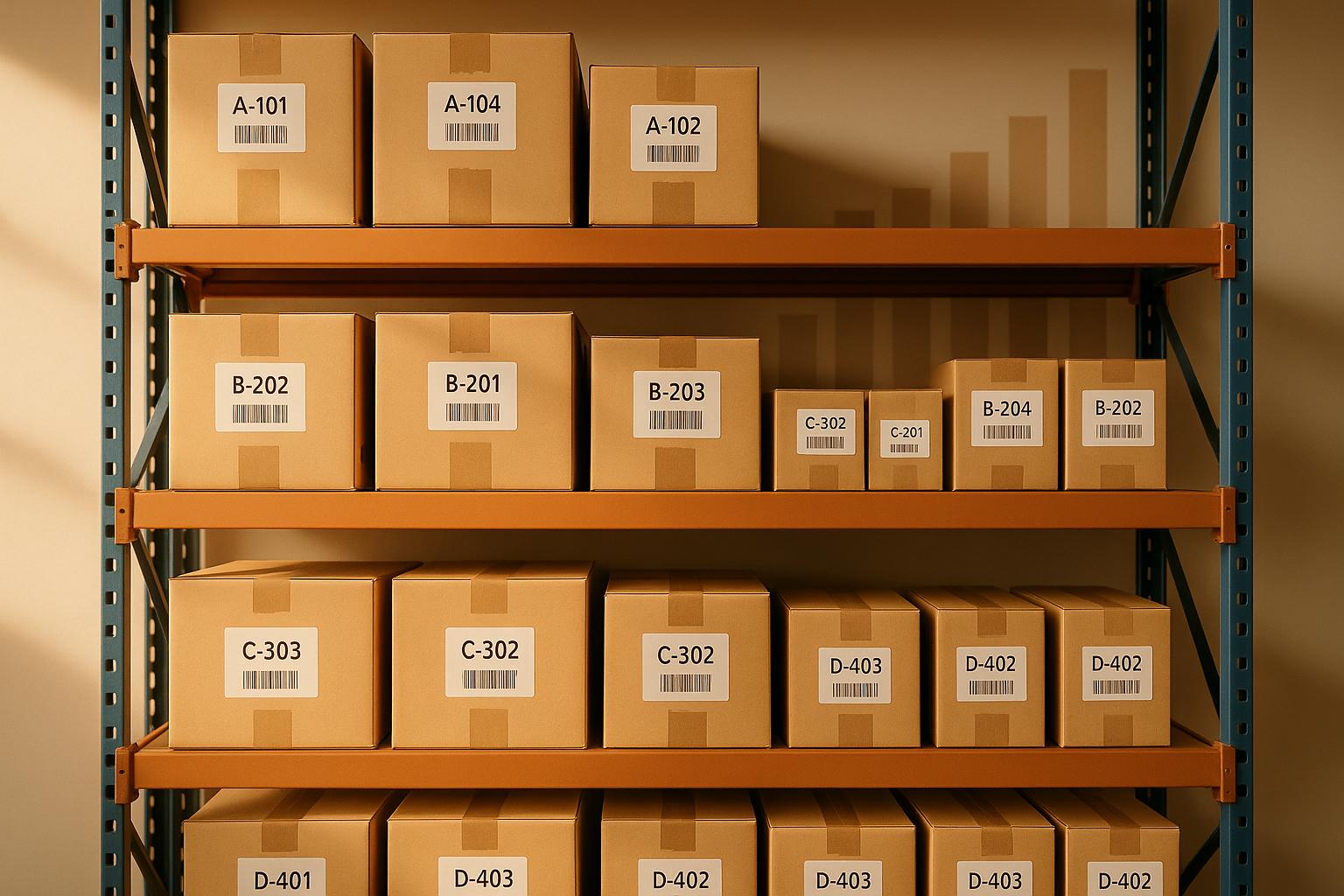Small-Batch Beauty Fulfillment: Why It Matters for Emerging DTC Brands

Small-batch fulfillment is reshaping how direct-to-consumer (DTC) beauty brands operate. It’s not just about shipping products; it’s about delivering personalized experiences that customers now expect. Here’s why it’s critical for new beauty brands:
- Customer Experience: Shoppers want more than products - they value thoughtful packaging, free samples, and quality presentation.
- Demand Flexibility: Small-batch methods help brands respond quickly to trends and avoid overproduction.
- Cost Savings: Accurate inventory management reduces waste and ensures fresh products.
- Regulatory Compliance: Beauty brands face strict rules; small-batch processes make managing these easier while maintaining quality.
Emerging DTC brands can use small-batch strategies to build stronger customer connections, adapt to market trends, and scale operations effectively. The right 3PL partners and technology-driven tools are key to making this happen.
How DeliverZen Scales DTC Fulfillment Without the Chaos | Drew Horner

Common Challenges Facing DTC Beauty Brands
Emerging DTC beauty brands have a lot going for them, but they also face some unique challenges that require careful planning and smart strategies to overcome. From navigating strict regulations to ensuring product quality and managing unpredictable demand, these hurdles can significantly impact their fulfillment processes.
Regulatory and Compliance Requirements
The beauty industry is heavily regulated, and for DTC brands, keeping up with these rules can feel overwhelming. The introduction of the Modernization of Cosmetics Regulation Act (MoCRA) has added even more layers of complexity, reshaping how brands handle product development and distribution.
Regulatory missteps can be incredibly costly. Product recalls, for instance, can cost anywhere from $10 million to $50 million. For smaller brands operating on tight budgets, even a single mistake could spell disaster.
On top of that, small teams often bear a disproportionate burden when it comes to compliance. Researching regulations alone can eat up 40% of their workweek, translating to about $240,000 annually in labor costs for a small team. Shockingly, 26% of regulatory professionals still rely on outdated tools like spreadsheets and email to track compliance requirements.
"The ability to manage regulatory demands more effectively than competitors is becoming a strategic advantage." - Caroline Shleifer, Founder and CEO at RegASK
And the landscape isn’t getting any simpler. Nearly half of regulatory professionals expect more ingredient bans by 2025, while 30% foresee increased ESG compliance requirements. This means brands need to anticipate these shifts while staying on top of current rules.
Technology is proving to be a game changer here. AI-driven compliance tools are already being used by 39% of regulatory professionals, with 68% planning to expand their use soon. These tools can help streamline compliance tasks, reduce manual errors, and provide real-time updates on regulatory changes.
"Investing in AI-driven compliance tools now can help companies avoid costly penalties and protect their market position." - Caroline Shleifer, Founder and CEO at RegASK
Navigating these regulatory challenges is essential, as they directly influence how brands approach their fulfillment processes. And while compliance is critical, maintaining product quality is just as important.
Maintaining Product Quality and Presentation
Cosmetics and skincare products aren’t just any e-commerce items - they’re delicate, often temperature-sensitive, and require special handling to ensure they arrive in perfect condition. This makes fulfillment a critical part of the customer experience.
The way a product is presented upon delivery can make or break a customer’s perception of the brand. A damaged item or poorly packaged order can lead to lost trust and fewer repeat purchases.
"Beauty products demand extra care and attention to detail. Our experienced team and streamlined systems make sure every order arrives just as your customers expect - pristine and on time." - Boxzooka
Temperature control adds another layer of complexity. Many beauty products contain active ingredients that can degrade or become ineffective if exposed to extreme temperatures during storage or shipping. This requires specialized facilities and shipping methods that many fulfillment providers simply aren’t equipped to handle.
Consistency in product quality and presentation is key to building customer loyalty. From custom packaging to careful handling during transit, every detail matters in the beauty industry.
"In beauty & cosmetics fulfillment, what's inside the box matters - but how it arrives matters just as much. A strong partner knows that every shipment is more than logistics - it's a direct extension of your brand promise." - IronLinx
Take Pairfum London, for example. This niche perfumery house relies on a third-party logistics (3PL) provider to meet strict regulatory standards, particularly for labeling and ingredient disclosures, which are crucial for international markets. Their 3PL also uses climate-controlled facilities to preserve product quality during storage and transit, while managing the intricate packing and labeling requirements for shipping dangerous goods.
By focusing on consistent quality and presentation, brands can safeguard their reputation while managing inventory effectively in a rapidly changing market.
Managing Inventory Changes and Seasonal Trends
Inventory management is another major hurdle for DTC beauty brands, especially given the unpredictable nature of their market. Between 2015 and 2022, e-commerce in the beauty sector nearly quadrupled, with beauty subscription boxes alone seeing a 20% boost in Average Order Value (AOV) during 2020. This rapid growth creates opportunities but also complicates demand forecasting.
Social media adds another layer of unpredictability. A single viral TikTok or influencer endorsement can send demand skyrocketing overnight, only for the trend to fade just as quickly. With 42% of consumers eager to try new brands, it’s a double-edged sword - great for visibility but challenging for forecasting which products will resonate.
The beauty market thrives on fast-moving trends and seasonal shifts. These can cause sudden demand spikes or leave brands stuck with excess inventory. Premium beauty products, for example, are expected to grow at an annual rate of 8% between 2022 and 2027, but this growth comes with added competition and pressure to scale inventory efficiently.
"By improving your inventory management process, you will ensure that you have a steady cash flow because you won't be spending money on unnecessary stock. The freed up capital can be invested in growth instead." - Metrilo Blog
To tackle these challenges, brands need a multi-pronged approach. Analyzing historical sales data, using demand forecasting tools, and maintaining flexible supply chain relationships are all essential. Diversifying suppliers can reduce the risks of relying on a single source, while real-time tracking allows brands to respond quickly to market changes.
The goal is to strike a balance between agility and efficiency. Brands that can adapt their inventory to meet demand while maintaining high-quality standards and customer satisfaction will stand out in the competitive DTC beauty market.
Key Parts of Scalable Small-Batch Fulfillment Solutions
Creating an efficient small-batch fulfillment strategy takes more than just basic shipping capabilities. For DTC beauty brands, the right approach means finding solutions that can handle their specific needs as they grow. A well-rounded fulfillment strategy combines tailored services, smart technology, and thoughtful features that help brands stand out in a competitive market.
Custom 3PL Services for Beauty Brands
Specialized third-party logistics (3PL) providers offer services designed specifically for the beauty industry. These go beyond standard warehousing and shipping, focusing on protecting product quality and elevating the customer experience.
Pick & pack services are the backbone of beauty fulfillment, but they require extra care. Many beauty products have unique needs - like temperature-sensitive skincare or fragile glass bottles. Experienced 3PL providers ensure every item is handled properly and arrives in perfect condition.
Kitting & assembly services are a game-changer for brands offering bundles, gift sets, or subscription boxes. These services allow brands to combine products into custom sets without needing their own assembly operations. This flexibility is especially helpful for testing new ideas or launching limited-edition collections.
White glove handling takes things a step further, offering premium care for high-value or delicate items. This includes protective packaging, specialized storage, and careful handling throughout the process.
A great example of this approach is JIT Transportation. With over 2.5 million square feet of warehouse space and access to a network of more than 500 carriers, JIT provides the infrastructure needed to support scaling beauty brands.
"We're more than a logistics provider - we're your partner in building smarter, more efficient solutions. From pick & pack and kitting & assembly to testing, upgrades, and white glove handling - we've got you covered." - JIT Transportation
JIT’s reliability is well-recognized. Hal Shapiro of Seagate Technology shared that JIT consistently delivers on its promises, while Curtis Martin, Senior Operations Manager at Synnex, praised their ability to handle last-minute requests without compromising performance.
Of course, effective fulfillment isn't just about hands-on services - it also requires smart technology to keep things running smoothly.
Technology-Driven Operations
Technology plays a critical role in ensuring accuracy and efficiency in fulfillment, especially when dealing with the complexities of beauty products. Real-time inventory tracking helps brands stay on top of stock levels, locations, and replenishment needs.
Systems like Warehouse Management Systems (WMS) and Transportation Management Systems (TMS) work together to streamline operations. They automate repetitive tasks, minimize human error, and provide actionable data for better decision-making.
Enterprise Resource Planning (ERP) integration connects fulfillment with a brand’s broader business systems. This integration ties together sales, inventory, and financial data, reducing manual work and preventing issues like stockouts or overselling.
The impact of technology is clear. For instance, Boxzooka boasts a 100% fulfillment accuracy rate thanks to its tech-driven processes. Their WMS ensures real-time inventory updates and optimized workflows.
"Our Warehouse Management System (WMS) ensures real-time inventory tracking and streamlined workflows." - Boxzooka
Automation also plays a big role in speeding up operations. Tasks like order verification, picking, packing, and shipping are automated to reduce errors and improve efficiency. For beauty brands, this is especially important because they often manage a wide range of SKUs and need precise batch tracking for products with expiration dates.
With these technological tools in place, brands can focus on adding value to the customer experience.
Value-Added Services for Brand Differentiation
A memorable unboxing experience can turn customers into loyal fans. Value-added services give brands the opportunity to create these moments, encouraging repeat purchases and fostering loyalty.
Custom packaging is one way to make a lasting impression. Research shows that 72% of Americans consider packaging design and materials when making purchasing decisions. Thoughtful packaging not only enhances the product but also reinforces the brand’s identity.
Personal touches also matter. Around 80% of consumers are more likely to buy from brands that offer personalized experiences. This could mean including handwritten notes, tailoring product recommendations, or offering custom product bundles based on individual preferences.
These value-added services complement the specialized handling and technology-driven operations described earlier, creating a comprehensive fulfillment solution. The numbers back this up - by 2019, 52% of U.S. consumers were buying health and beauty products from DTC brands, and by 2026, nearly one-third of cosmetics sales are expected to come from direct-to-consumer channels. This trend highlights the importance of investing in standout fulfillment experiences.
Scaling these services requires efficiency. The best 3PL providers are equipped to deliver these extras without slowing down shipping or compromising accuracy, ensuring brands can meet customer expectations while maintaining operational excellence.
sbb-itb-eafa320
How to Implement Effective Small-Batch Fulfillment
Creating a small-batch fulfillment strategy that works requires smart partnerships and efficient processes. For emerging DTC beauty brands, the challenge lies in building systems that can handle today's orders while preparing for tomorrow's growth. Here's a breakdown of the key areas to focus on for a strong fulfillment strategy.
Working with 3PL Partners
Choosing the right third-party logistics (3PL) partner can make all the difference. Beauty brands face unique challenges, like managing temperature-sensitive products and handling seasonal spikes in demand.
Seek flexibility in services. A good 3PL partner should be able to scale operations during peak times without hitting you with extra fees.
Emphasize communication and transparency. Regular check-ins and detailed reports on order accuracy, shipping times, and quality issues can help you address potential problems early. This ensures the relationship feels collaborative, not just transactional.
Ensure seamless tech integration. Your 3PL should connect smoothly with your e-commerce platform to enable real-time data sharing.
JIT Transportation is a great example of this approach. Their nationwide warehouse network and strong carrier relationships provide the infrastructure needed for both current operations and future growth.
Test customer service responsiveness. Before committing, reach out to their support team at different times to gauge response times and quality. Quick, thorough replies indicate a level of service that can reflect well on your brand when managing shipping or returns.
Improving Inventory and Demand Forecasting
In the beauty industry, where trends shift rapidly, accurate forecasting is essential to avoid overstocking or running out of stock.
Leverage AI-powered tools. By 2025, over 40% of beauty brands are expected to use artificial intelligence to analyze sales trends and manage inventory. These tools can identify patterns that traditional methods might miss, such as seasonal trends, social media buzz, and historical sales data.
Track social media trends. With about 70% of beauty purchases influenced by social media, monitoring hashtags, influencer posts, and mentions can help you anticipate demand surges for specific products.
Use cloud-based systems for inventory management. Sync your inventory across all sales channels, whether it's your website, Amazon, or pop-up shops. This prevents overselling and keeps operations running smoothly.
Implement FIFO (First In, First Out). For beauty products with expiration dates, shipping older inventory first reduces waste and ensures customers don't receive items nearing the end of their shelf life.
With online sales projected to account for 65.9% of total beauty and personal care market revenue in the U.S. by 2025, having a robust inventory system is more important than ever. Collaboration between marketing, product development, and customer service teams can also enhance forecasting by adding insights that data alone might miss.
Simplifying Returns Management
An efficient returns process not only strengthens customer relationships but also provides valuable insights for your business. Beyond forecasting, managing returns effectively is crucial for maintaining customer satisfaction as your brand grows.
Develop a clear returns policy. With 85% of consumers considering sustainability when choosing beauty products, offering eco-friendly options like refillable products or recycling programs can make your brand more appealing.
Automate the returns process. Allow customers to initiate returns online, print prepaid shipping labels, and track the status of refunds or exchanges. Automation speeds up the process and reduces errors.
Analyze returns data. Identify which products are returned most often and why. This can reveal opportunities to improve product descriptions, packaging, or even the products themselves.
Work with a 3PL that manages returns. JIT Transportation offers reverse logistics services, handling everything from receiving returned items to processing refunds or exchanges. This frees up your internal team while maintaining consistency.
Set clear timelines. Let customers know how long refunds or exchanges will take. Transparency builds trust and keeps satisfaction high.
Encourage exchanges over refunds. Offering an exchange - like a different shade or size - can often resolve the issue while keeping the sale intact.
With the subscription beauty box market expected to grow by 12% annually, a smooth returns process is becoming even more critical. Customers value flexibility, and brands that provide it tend to earn stronger loyalty.
Conclusion: How Small-Batch Fulfillment Affects Growth and Loyalty
Revisiting the idea of personalized logistics, small-batch fulfillment has proven to be a game-changer for emerging DTC beauty brands. It’s not just about managing logistics - it’s about creating a competitive edge in a crowded market. As Faith Appleton, Founder of FāTH Skincare, aptly explains:
"Small batch is scalable; it's a matter of how you do it. We know that we can scale, but you can scale too much. It's about intentionality and demand."
This thoughtful approach ensures brands can grow sustainably while preserving the personal touch that today’s beauty customers expect. When executed properly, small-batch fulfillment supports consistent, tailored customer experiences. In the beauty industry, fulfillment plays a vital role in delivering on brand promises.
Key Metrics for Measuring Success
To make sure your fulfillment strategy delivers real results, tracking the right metrics is essential. Focus on areas like:
- Order accuracy: Ensuring customers get exactly what they ordered.
- Processing speed: Reducing the time from order to delivery.
- Customer satisfaction: Measuring how fulfillment impacts the overall experience.
- Inventory turnover: Keeping stock levels optimized to avoid waste.
- Sustainability: Minimizing environmental impact while meeting consumer expectations.
These metrics provide a clear picture of how well your fulfillment strategy supports growth and reliability.
Small-Batch Fulfillment as a Growth Tool
Beyond the numbers, small-batch fulfillment is a powerful tool for innovation and loyalty. It allows brands to experiment with new products, quickly adapt to market trends, and maintain high-quality standards. This flexibility not only reduces inventory risks but also strengthens customer connections through personalized experiences.
For example, small-batch models align perfectly with the values of sustainability-conscious consumers. By producing less waste and operating on a selective scale, brands can attract the 75% of shoppers who prioritize local and value-driven purchases.
Success in beauty fulfillment isn’t just about delivering products - it’s about managing experiences at scale. Choosing the right fulfillment partner is crucial. A generic 3PL may fall short of the specialized needs of beauty brands. Instead, providers like JIT Transportation, with their nationwide network and expertise in beauty logistics, offer the flexibility and infrastructure required to support both current demands and future growth.
The most successful beauty brands see small-batch fulfillment not as a limitation but as a strategic advantage. By combining operational efficiency with customer-focused innovation, small-batch fulfillment becomes the foundation for sustainable and profitable growth in the competitive DTC beauty market.
FAQs
How does small-batch fulfillment help DTC beauty brands stay compliant with regulations?
Small-batch fulfillment gives direct-to-consumer (DTC) beauty brands a way to keep a closer eye on their operations while staying aligned with industry regulations. By working with smaller quantities, brands can introduce specialized packaging, temperature-controlled storage, and customized handling practices that cater to the unique needs of sensitive beauty products.
This method also simplifies tracking essential details like lot numbers and expiration dates, which helps minimize compliance risks and maintain product quality. These precise processes allow brands to meet regulatory standards with confidence while ensuring customers receive products they can trust.
Why is it important for DTC beauty brands to prioritize quality and presentation in small-batch fulfillment?
When it comes to small-batch fulfillment, product quality and presentation play a crucial role for DTC beauty brands. Every product sent out is a direct reflection of the brand’s standards and values. Paying attention to these details helps build trust with customers and strengthens the brand’s reputation.
A well-thought-out presentation also elevates the unboxing experience, making customers feel appreciated and adding a touch of exclusivity. This attention to detail doesn’t just leave a lasting impression - it boosts satisfaction, encourages repeat purchases, and nurtures loyalty. In a crowded beauty market, these elements are essential for driving growth and standing out from the competition.
Related posts
Related Articles

Top 3PL KPIs for Scaling E-commerce Brands

Best Practices for Returns Reconciliation in 3PL

